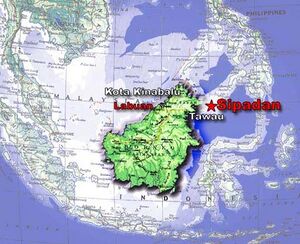Borneo
A large island in the South Pacific, Borneo is one of the few places in the world where traditional tribal tattooing is still practiced today just as it has been for thousands of years. Until recently many of the inland tribes had little contact with the outside world. As a result, they have preserved many aspects of their traditional way of life, including tattooing. Headhunting and tattooing were intimately connected in the magic, ritual and social life of many Dayak tribes. The hand tattoo was a symbol of status in life and also served an important function after death. It was supposed to illuminate the darkness as the soul wandered in search of the River of the Dead. Part of the Island (Kalimantan) belongs to Indonesia, another part (Sabah and Sarawak) to Malaysia, with the small remainder belonging to the Sultanate of Brunei. Borneo first met travelers from Spain and Portugal in the 16th century, and then soon after, the Dutch and British arrived who controlled the country. Settlements followed, spreading Christianity and Islam up river until Malaysia and Indonesia gained independence (after a period of brutal occupation by the Japanese) in the mid 20th century, using the island as a source of exotic woods and other hard-to-find products. The inland regions of Borneo are comprised of a variety of different native tribes which each have their own distinct language and culture (and often went to war over them). That said, they did share similar homes, food, and so on (more similar than dissimilar). At this point the island is facing massive (30% at least so far) deforestation and industrialization which promises to destroy these cultures at a typically alarming rate. Borneo-inspired tribal tattoos are one of the most popular kinds of tribal tattoos which still retain direct reference to their origins. In Borneo, many of the tattoos are highly stylized representations of local wildlife.
Dayak
Dayak is the name to the interior indigenous population of Borneo including multiple tribes that each have their own customs and dialects. The group numbers about two million people. The Dayaks have maintained their customs and daily ways of life largely uninfluenced by modern civilization; this includes their practices of body modification, including stretched piercings and their preservation of ancient tattoo motifs. Tattooing, piercing, and other traditional Dayak arts are probably of great antiquity. Many of the traditional tattoo designs resemble decorative motifs found in the art of Bali and Java, and the tattooing instruments and techniques used by the Dayaks are similar to those found throughout Polynesia, suggesting that tattooing and other native arts were imported to Borneo many thousands of years ago by stone age voyagers like those who populated other Pacific islands. One still sees many Dayak men who wear the bold abstract tattoos of their ancestors on their shoulders and arms, but some of the younger men who have traveled to other Asian countries in search of employment return with commercial tattoos.
Dayak Tattoos (listed by tribe)
See Also
Category page: .
